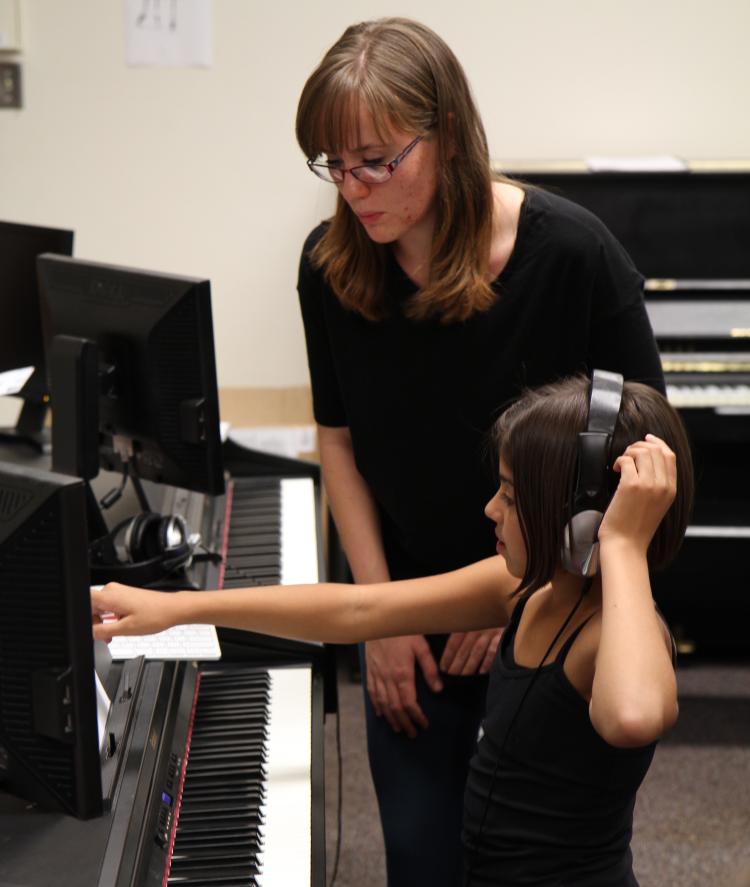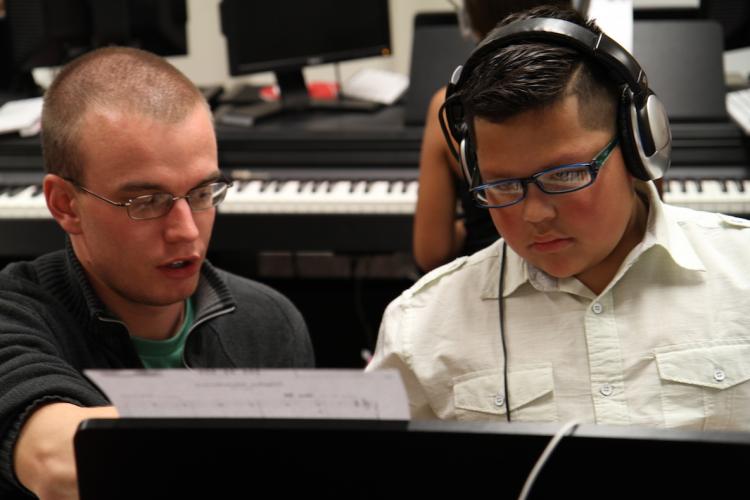Piano for Dreamers: Expanding horizons 88 keys at a time

"I’ve taught for eight years now in different settings. But whenever I teach kids who wouldn’t have access to music under normal circumstances, I’m not only sharing the joy of music but of something they’ve been excluded from. Teaching a different population gives me more tools in my arsenal as a teacher."
Hjelmstad is the doctoral student instructor for Piano for Dreamers, a program started last year by Associate Professor of Piano Pedagogy Alejandro Cremaschi. With help from a grant from the university Office of Outreach and Engagement, Piano for Dreamers partners with the Boulder County chapter of the "I Have a Dream" Foundation to offer a no-cost weekly piano class to low-income elementary school students.
“Research shows that kids who learn music at a young age have higher grades and stay in school,” Cremaschi says. “This is opening up new possibilities for children who might not be able to afford lessons otherwise.”
This year’s class, a group of 12 fifth graders from Longmont, includes some returning students from last year. The "I Have a Dream" Foundation’s model places the same coordinator with the same cohort of students from kindergarten through high school.
The goal of the classes is to provide an introduction to reading music and playing the piano, as well as music theory and music history. During class time, Hjelmstad and his undergraduate student assistant, senior Abby Hesse, work with students on rhythm, sight reading, improvisation and ensemble playing.
Though the university grant allowed Piano for Dreamers to purchase keyboards for the students to take home, Cremaschi says they often do not practice on their own—making in-class instruction all the more important.
Cremaschi explains, “They don’t have as much time to practice because maybe their parents are working several jobs, so we found that some of our regular methods weren’t working as well. We had to tailor the teaching to meet them where they were and create activities that would reinforce and revisit concepts.”

“Method books that we use to teach piano are progressively graded, so I had to throw that out the window, because these kids aren’t going home and practicing after lessons. All that’s done in the classroom.”
“I started playing piano when I was 7, and my dad played piano, too, so he was there to steer me in the right direction,” Hjelmstad says. “[The Piano for Dreamers students] are playing some of the same pieces I used to play, but they bussed 45 minutes to get here and play for 50 minutes a week with 10 other kids. It’s so much harder—but they’re still doing it.”
Cremaschi—one-time chair of the College of Music’s diversity committee and winner of the 2015 Faculty Award for Equity and Excellence from the Office of Outreach and Engagement—says the weekly class is eye opening for both teacher and student.
“Many of the children are minority students, often Hispanic,” he says. “We need more of an awareness in the college of things we could do with populations we haven’t served in the past. The concert we did last year with El Sistema at Boettcher is an example of the benefit of that outreach.”
Adds Hjelmstad, “There are a lot of lessons to be learned about sticking with something and determination. We deal with some frustration in there. But by the end of the semester, the students feel like they’ve accomplished something, and that’s great to experience.”
And as Cremaschi looks toward expanding Piano for Dreamers in the future, he says he hopes his colleagues will follow his lead.
“It’s not just the right thing to do for the community, it helps open up new teaching possibilities for our students. In terms of instrumental pedagogy, I hope my colleagues understand that serving pre-college kids is helpful for our students as well.”
For more information about Piano for Dreamers, visit the Office of Outreach and Engagement website.


